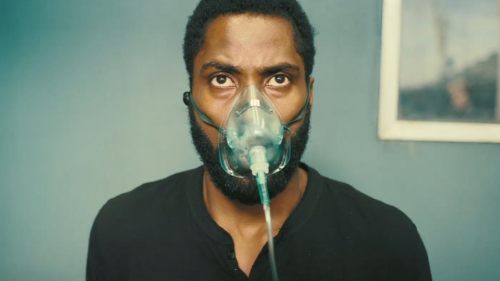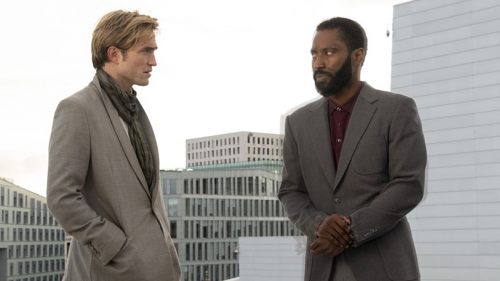MEMENTO: Piecing Together The Past And Present Through Photography
Disclosure: Tim League co-owns NEON and Birth.Movies.Death.
Errol Morris' The B-Side is coming. Get your tickets here!
Sometimes photographs are all we have left. They serve as a reminder that all people, experiences, and objects possess vulnerability through their mortality. This is exemplified through a simple image captured and extracted from life’s otherwise relentless, and often ruthless, continuation of time. We take pictures to hold onto memories, so we can enjoy the linear progression of aging and to reminisce and look back on times that we can’t relive, no matter how hard we try. That streamline of experience is one many people take for granted and is the kind of challenge that Christopher Nolan showcases in his 2000 psychological thriller, Memento.
Nolan’s protagonist, Leonard Shelby, (Guy Pierce) suffers from anterograde amnesia which is characterized by the inability to create new memories after he experienced a blow to the head the night his wife was murdered. While long-term memories before that event remain intact, there is a partial ability to recall the recent past or short-term memory. Seeking revenge, Leonard navigates his reality through photos he takes of people he encounters and situations he experiences to remember facts, since they are more reliable than his memories which only last about fifteen minutes.
To convey such visually difficult subject matter translatable to the audience, Nolan structured this film as an alternating narrative. The opening scene focuses on a fully developed polaroid picture being shaken, but fading as the final image slowly blurs and becomes distorted to an unrecognizable light freshly ejected from the camera, followed by a retrograde shot of a man being murdered. This immediate symbolism sets the tone for the entire film and prepares the audience for a fragmented journey that induces confusion, directly reflecting the psychological disorientation of the main character.
The plot is told in first-person and is structured by intersecting timelines suggesting the complex relationship between memory and imagination. Scenes shot in monochrome possess a neo-noir ambiance complete with grainy images, induced paranoia, and dialogue that sounds more like an edited interview. The black and white subplot narrative suggests an objective view into Leonard’s character and gives the audience an outside perspective while moving chronologically forward. In contrast are the scenes filmed in color which depict Leonard’s subjective narrative or the voice of his mind, offering a first-person look into how he is perceiving his environment while moving backward within the storyline. Alternating between linear and nonlinear progression, Nolan successfully captures the complications experienced by the character and visually displays confusion in a way that immerses the audience into those experiences, but also emphasizes his reliance of reality through photographs.
Elements of mistrust and deception are scattered throughout the film while we learn the backstory of Natalie (Carrie-Anne Moss), the girlfriend of a local drug dealer who bears a busted lip and bruised cheek, along with Teddy (Joe Pantoliano) the cheery yet unnerving friend who just wants to help Leonard but exudes a sense of unease in nearly each of their encounters. Leonard takes polaroids and gets scripted tattoos on his body to remember important details about the man he is chasing. Trusting only himself, the storylines eventually converge in the end to reveal a twist of fairly epic and gut-wrenching proportions.
Photography serves as a replacement for Leonard’s short-term memory, which permits him to manipulate the truth. At the end of the film, we learn that Leonard maintains a selective memory displayed by what photos he consciously chooses to keep and which ones he decides to destroy, and therefore forget indefinitely. Teddy tries to convince Leonard that it was Leonard himself who killed his wife, and that the whole side narrative of Sammy Jenkins (Stephen Tobolowsky), who also suffered memory loss, was actually just Leonard unable to cope with what he had done.
In the film, Teddy states that “we all lie to ourselves to be happy”. He’s got a damn good point. It’s not uncommon to fabricate memories, to try and spin something positive outwardly to selfishly feel good internally, or embellish a memory that provides meaning to your otherwise boring life. In order to move forward and deal with the past, distortions can be a beautiful coping mechanism. Seventeen years after this film was released, these notions still ring true and have been explored through other films such as Eternal Sunshine of the Spotless Mind and 50 First Dates. Even in our daily lives on social media, people take photos and post what they want to remember, and what they want other people to remember as well. It is this kind of selective memory that lies dormant and only reveals itself when psychologically necessary to either accept, deny, or alter who you truly are.
Photography is ultimately an art form that unveils, heals, and memorializes. While every photographer has their style, photographer Elsa Dorfman is known for her use of a large 20x24 Polaroid camera. Over the span of her career, she has shot portraits of terminally ill cancer patients, poets, and famous musicians including Bob Dylan. Director Errol Morris’ The B-Side is a documentary into Dorfman’s life and process. She always takes two pictures of her clients and keeps the rejected ones which she refers to as “the B-Side”. Dorfman exemplifies the allure and intrigue of photography with her balance of simplicity alongside human complexity. With such influential documentaries like The Fog of War and The Thin Blue Line under his belt, Morris appears to be the perfect choice to capture and share her story.
A mesmerizing example of how pictures are not always what they seem and may hold multiple meanings, Memento serves as a reminder that what we choose to recall can be comfortably accurate, but also fabricated for recollection that most importantly serves as a catalyst for us to heal and continue moving forward with purpose.



